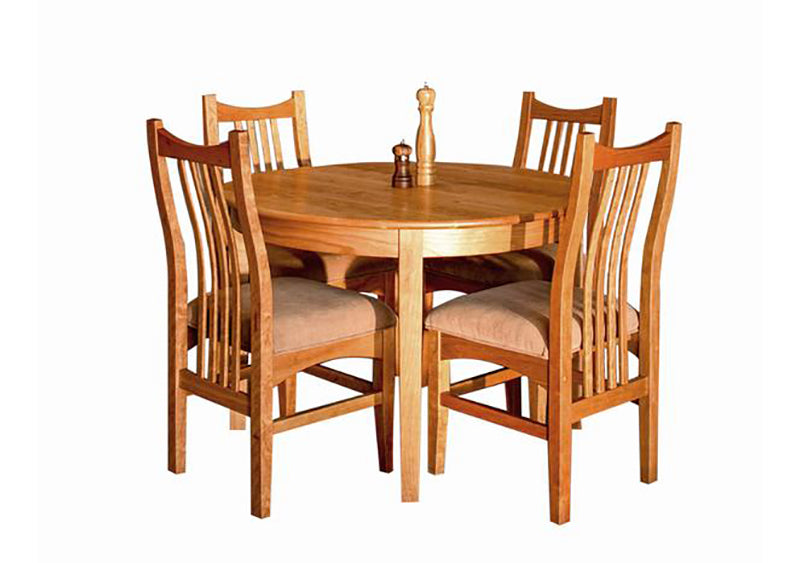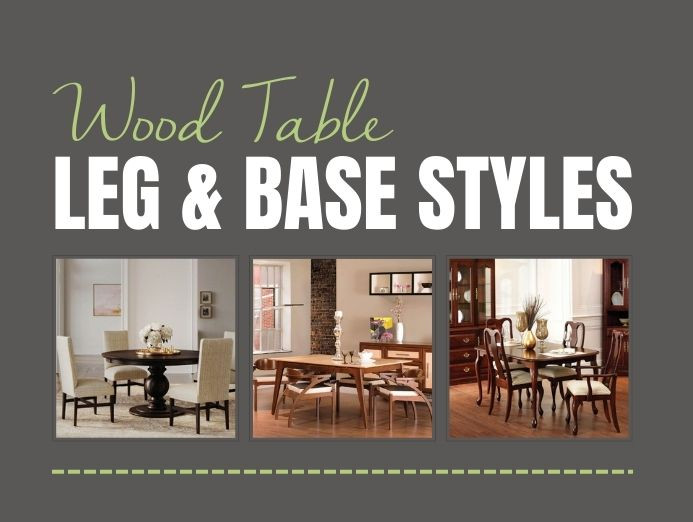Why Custom Dining Room Table Legs Are Worth the Investment
Why Custom Dining Room Table Legs Are Worth the Investment
Blog Article
From Standard to Modern: Discover the Ideal Eating Space Table Legs for Your Design
The selection of dining area table legs plays an essential function in specifying the general character of your room, linking the void between traditional workmanship and contemporary visual appeals. While classic styles such as cabriole and turned legs stimulate a sense of ageless sophistication, modern styles like barrette and geometric options offer an opportunity for striking aesthetic interest. Reviewing the best equilibrium between these designs requires a nuanced understanding of your existing decor and personal taste. As you take into consideration these aspects, the inquiry stays: just how can you seamlessly incorporate these varied leg styles to produce an unified eating experience?
Comprehending Table Leg Styles
The variety of eating room table leg designs can significantly influence both the appearances and capability of the area. Each leg style contributes one-of-a-kind practical functions and visual aspects, dealing with diverse style preferences and use needs. Comprehending these designs is important for choosing the right dining table that aligns with your overall interior decoration vision.
For example, conical legs use a tidy, traditional appearance that can boost an area's sophistication, while pedestal bases give security and make the most of legroom, making them perfect for smaller sized spaces. Hairpin legs, a hallmark of mid-century modern layout, introduce a commercial flair, permitting for an airy, open feel. Trestle legs stimulate rustic appeal, supplying robust support and a sense of timelessness.
Wooden legs can bring heat and structure, whereas metal alternatives usually communicate a sleek, contemporary ambiance. Ultimately, recognizing table leg styles is necessary for producing a cohesive eating area that shows personal style while making certain practicality and comfort.
Typical Table Leg Options
When picking dining-room table legs, conventional choices commonly personify classic style and workmanship. These designs reflect a rich heritage and a dedication to quality, making them ideal for those who appreciate timeless aesthetic appeals.
Among the most legendary conventional leg styles is the cabriole leg, characterized by its stylish curved form. This style commonly includes decorative makings and is most commonly found in Queen Anne and Chippendale furnishings. One more preferred option is the turned leg, which boasts a series of smooth, rounded shapes that offer a traditional look while preserving stability.
Additionally, the straight leg, while basic, uses a basic and strong structure that can blend perfectly with a variety of tabletop styles. For those attracted to ornate describing, claw-and-ball feet legs stimulate a sense of splendour and can serve as a spectacular centerpiece in any dining room.
Last but not least, stand bases, although not strictly legs, provide a different typical alternative that enables for ample legroom and can be wonderfully carved. Each of these typical leg styles adds to the total setting of a dining-room, weding feature with aesthetic appeal.

Modern Table Leg Designs
Modern table leg layouts provide a diverse variety of styles that stress innovative products and clean lines. These styles frequently focus on performance while offering as striking centerpieces within an eating area. Minimal looks prevail, with legs crafted from products such as metal, glass, and engineered timber, which contribute to a contemporary and ventilated feel.
One prominent design is the hairpin leg, identified by its slender, conical framework that offers security without overwhelming the table top (dining room table legs). This style is commonly found in mid-century contemporary furnishings and can effortlessly match numerous table shapes. One more fad is the use of geometric shapes, where legs might tackle unbalanced or angular linked here kinds, adding visual rate of interest and a touch of virtuosity

Blending Styles for Unique Spaces
Frequently, property owners seek to create unique eating rooms that show their personal style by blending numerous layout aspects. This technique enables the incorporation of diverse visual appeals, resulting in an unified yet distinct atmosphere. Pairing a rustic wood table with smooth, modern steel legs can produce an attractive comparison that raises the room's total charm.
In addition, incorporating vintage table legs with contemporary table tops can evoke a feeling of history while maintaining a contemporary sensibility. Such mixes not only display individual preference however also motivate creativity, permitting property owners to curate a room that feels both individual and welcoming.
Color plays an essential role in this blending process; picking table legs that match or contrast with the existing color pattern can boost visual passion. For example, whitewashed legs can soften the daring of a dark table surface, producing a well balanced aesthetic.
Tips for Selecting the Right Legs
Picking the right table legs is vital for attaining both functionality and visual allure in your dining area. Begin by taking into consideration the general design of your area. Conventional setups profit from legs that feature elaborate makings or transformed designs, while contemporary areas might ask for sleek, minimalist designs.
Following, assess the height and stability of the legs. dining room table legs. Common eating tables range between 28 to 30 inches in elevation, so ensure the legs complement this measurement for comfort. In addition, durable products, such as wood or steel, can enhance stability and durability
Examine the leg form too-- alternatives consist of straight, tapered, or pedestal designs. Straight legs offer a classic look, while tapered legs can add a touch of beauty. Pedestal bases supply enough legroom and are ideal for smaller sized rooms.
Conclusion
In summary, selecting the perfect dining room table legs requires careful consideration of both traditional and modern designs. Typical alternatives such as cabriole and transformed legs provide timeless elegance, while modern-day you could look here layouts like try these out barrette and geometric forms provide a modern touch. By harmonizing leg style, elevation, and material with the overall décor, a cohesive and inviting environment can be achieved. Eventually, the chosen table legs must show the desired aesthetic, improving the dining experience within the space.
The variety of eating space table leg styles can dramatically influence both the visual appeals and capability of the area. Ultimately, recognizing table leg styles is crucial for producing a cohesive eating location that shows individual style while making certain functionality and convenience.One of the most famous traditional leg styles is the cabriole leg, identified by its stylish bent shape. Straight legs use a classic appearance, while conical legs can add a touch of style.In summary, selecting the suitable dining space table legs calls for careful factor to consider of both modern-day and conventional designs.
Report this page